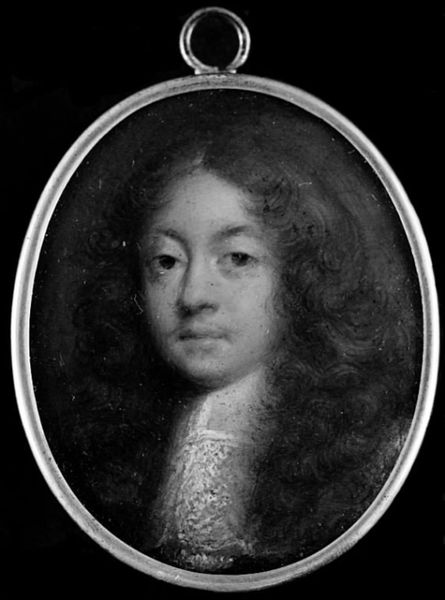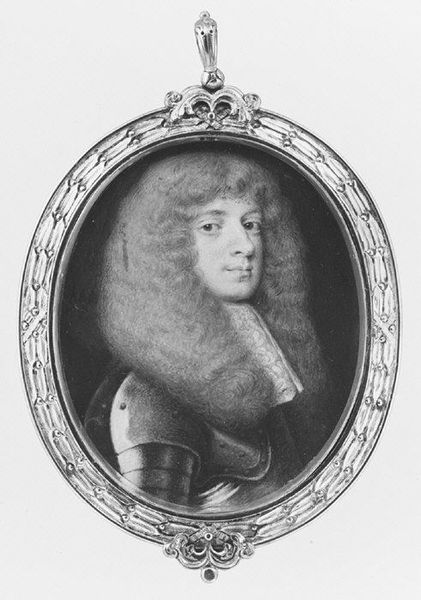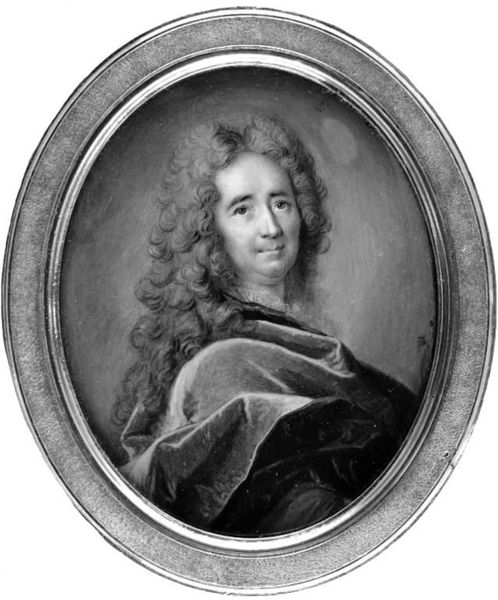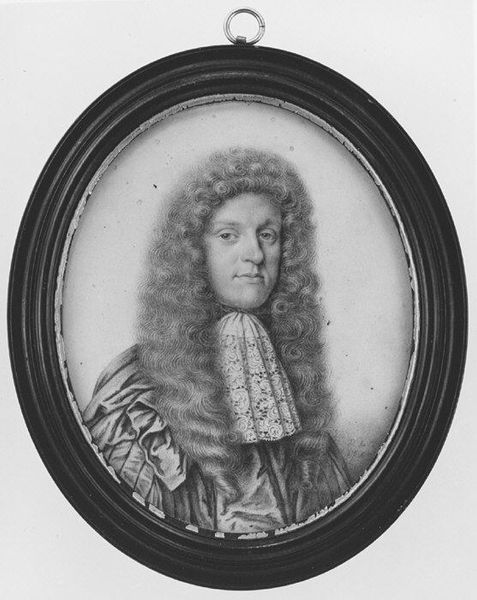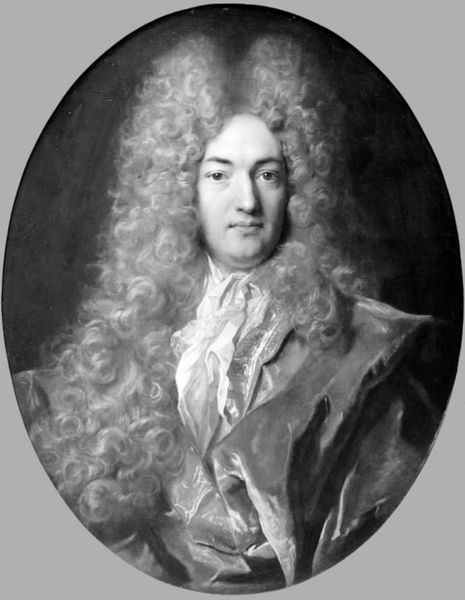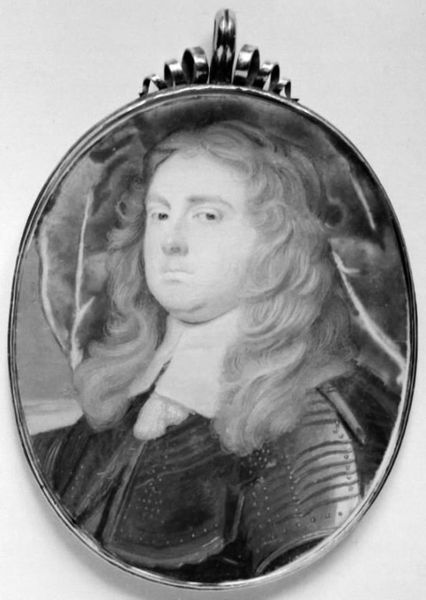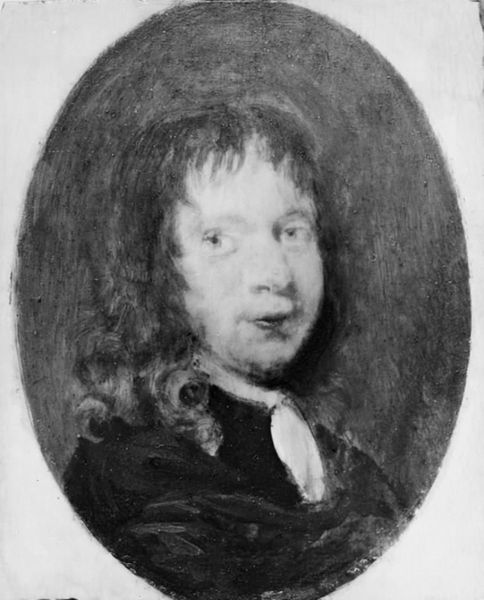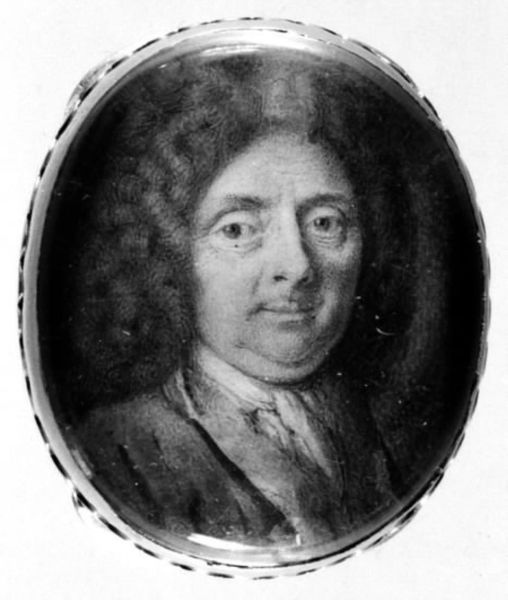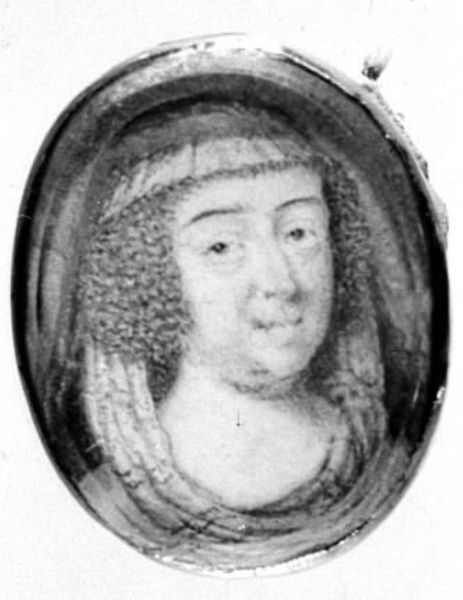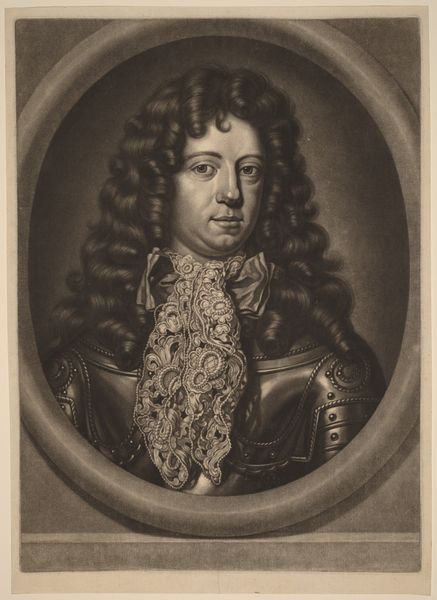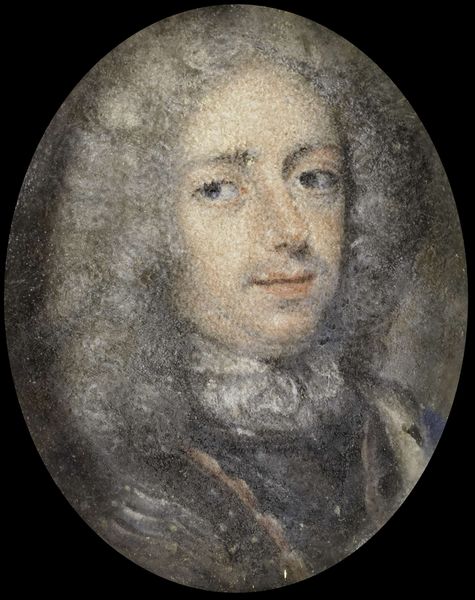
drawing, paper, ink
#
portrait
#
drawing
#
baroque
#
portrait
#
paper
#
ink
#
miniature
Dimensions: 3.2 cm (height) x 2.7 cm (width) (Netto)
Curator: This delicate drawing on paper, rendered in ink, depicts an unknown man from the period spanning roughly 1685 to 1729. It's currently held here at the SMK, the National Gallery of Denmark. Editor: Immediately, the intense concentration of visual information around the face strikes me. That wig! The framing oval further compressing the energy, it's almost vibrating with textural intensity. Curator: Precisely. In portraiture, particularly during the Baroque era, the wig itself served as a potent symbol of status and power. Think of the theatricality and elaborate ornamentation, which broadcasted an individual’s societal position. Editor: Ornamentation taken to its logical extreme! All that intricate coiffure contrasting sharply with the rather soft and almost undefined treatment of the figure's garment. Is this asymmetry intentional, or is it symptomatic of the artist focusing their skills selectively? Curator: I think it reflects an emphasis on the persona. Consider portrait miniatures – these were frequently keepsakes, mementos, tokens of affection or reminders of lineage. The face becomes a focal point carrying considerable emotional and historical weight. Think, too, of its scale. A small portable object becomes invested with greater symbolic import precisely because of its intimate format. Editor: You speak of intimacy, but there's a kind of impersonal quality in this image. Despite being drawn at close range, so to speak, the sitter appears detached, almost like a type rather than a particular person. The eyes especially… flat. Curator: Perhaps that’s down to our expectations, so steeped in modern concepts of individualism. However, the gaze also conveys a self-assurance—an assertion of presence and authority consistent with its social context. Editor: So, it’s the intersection of individual representation and societal role playing, bound together within these inky lines. Curator: Yes, indeed! These kinds of pieces offered tangible ways to construct identity, both for the sitter and their future generations. Editor: Something so intensely focused on appearance, ironically, shows more than just outer presentation. A fascinating capsule of visual, material, and social histories.
Comments
No comments
Be the first to comment and join the conversation on the ultimate creative platform.
